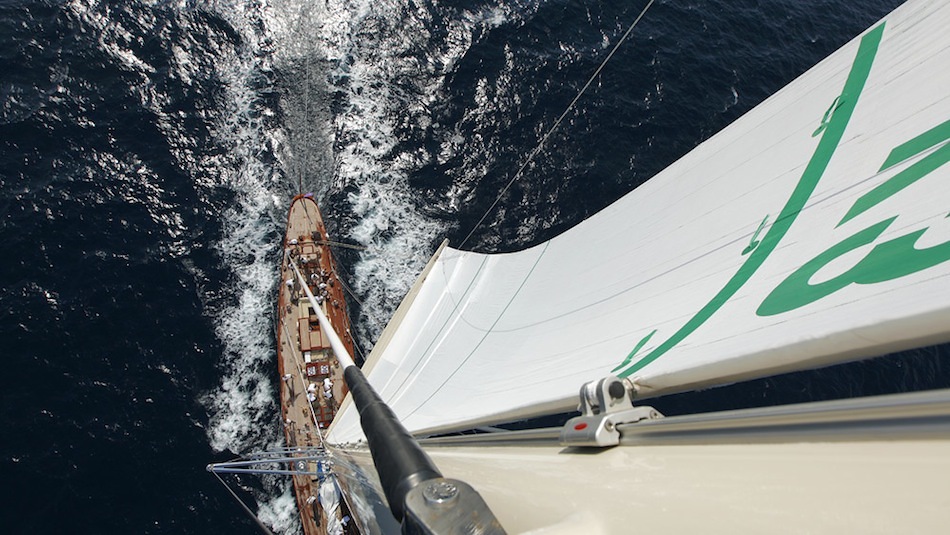
17 Mar A Shamrock for St. Patrick’s Day
St. Patrick’s Day means all things green, and shamrocks are everywhere. According to tradition, the four leaf clover symbolizes luck. But what do shamrocks have to do with sailing? Actually, there is a very famous sailing shamrock: J Class yacht Shamrock V, one of the original J’s from 1930s. Turns out that this shamrock was indeed lucky!
Shamrock V has a storied history. She was the first J Class yacht to be built in the UK, and the only one constructed of wood. Surprisingly, only three of the original J Class yachts are still around today. And while she’s been restored many times, Shamrock V is the only J that never fell into dereliction.
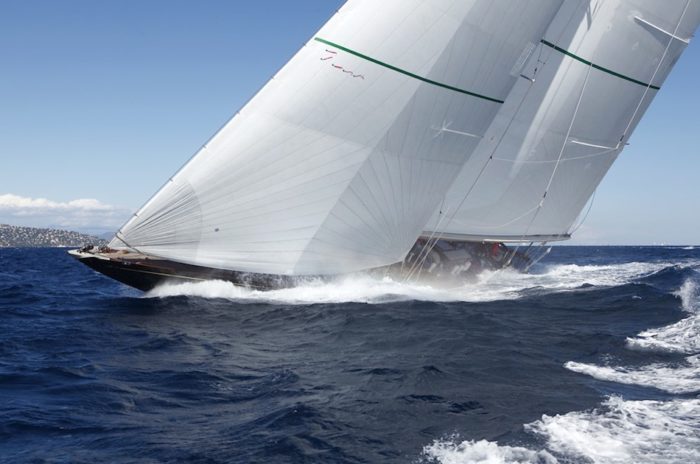
The restored Shamrock V racing upwind. Photo courtesy J Class Association.
The J Class represents the golden age of sailing. Shamrock V was one of the first Js built under the new Universal Rule for the America’s Cup proposed by Nathaniel Herreshoff and adopted in 1928. This rule allowed the waterline area to be increased without sail area being restricted. The rule change resulted in some of the most beautiful sailing yachts ever built – with narrow beams, long overhangs and tall Bermuda rigs.
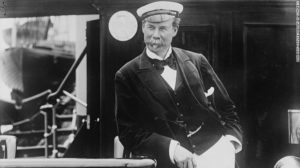
Sir Thomas Lipton aboard Shamrock V. Photo courtesy CNN.
Shamrock V was commissioned by Sir Thomas Lipton – of Lipton Tea fame – for his fifth America’s Cup Challenge in 1930. Shamrock was designed by renowned naval architect Charles Ernest Nicholson and constructed at the Camper and Nicholsons yard in Gosport. She launched in April 1930, and promptly won 15 of 22 races on the British regatta circuit. Then Lipton and crew sailed her across the Atlantic to challenge the New York Yacht Club for the 14th America’s Cup.
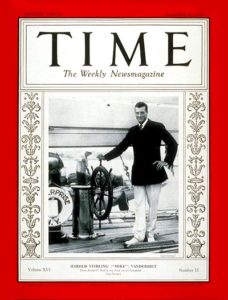
Harold Vanderbilt on board Enterprise on the cover of Time Magazine in 1930.
Despite the ravages of the Great Depression, four New York Yacht Club syndicates produced J Class challengers that year: Enterprise, Whirlwind, Yankee and Weetamoe. Harold Vanderbilt‘s Enterprise emerged victorious from the series, and went on to sail against Shamrock V for the Cup. It was the first America’s Cup to be sailed in the waters off Newport, Rhode Island. In the best of 7 series, Enterprise won four races straight. Although Lipton and his crew raced hard, Shamrock was beset by bad luck (a main halyard snapped in one race!) and was no match for Vanderbilt’s superior tactics, knowledge of local waters, and lighter, faster ship.
Over 31 years and five attempts at the Cup, Sir Thomas Lipton endeared himself to the American public and made his tea famous in the process. Lipton was a self-made man, born into poverty in Glasgow, and Americans appreciated his grit and determination. The ever-gracious Sir Lipton was awarded a specially designed cup for “the best of all losers” after Shamrock V‘s defeat in 1930. At age 79, it was his last attempt at the Cup; he died the following year.
After Lipton’s death, Shamrock V was sold to aviation designer and magnate, Sir Thomas Sopwith, founder of Sopwith Aviation Company (and creator of the famous Sopwith Camel). He raced Shamrock in Britain, and in turn sold her to fellow aviation mogul Sir Richard Fairey, who campaigned her with King George V against other J Class yachts in 1935.
Although bad luck hampered Shamrock‘s America’s Cup bid, her luck was about to turn. Just before World War II, Italian senator and publisher Mario Crespi purchased Shamrock V. Under the Fascist rules in Italy at the time, Crespi was required to rename his boat. Shamrock V became Quadrifoglio – “four leaves” in Italian. This turned out to be a stroke of lucky timing. Had the yacht remained in England, she surely would have been sacrificed for war materials. During the war, Crespi hid Quadrifoglio in a hay barn in Italy so that her metal fittings wouldn’t be stripped for the war effort. After the war, he initiated an extensive refit, installing her distinctive bird’s eye maple interior and adding an engine. The family owned Quadrifoglio until Crespi’s death.
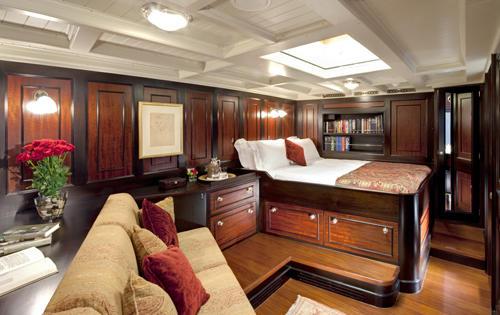
Shamrock V’s master stateroom, featuring the bird’s eye maple interior installed by Mario Crespi. Photo courtesy Yacht Charter Fleet.
In yet another stroke of luck, Quadrifoglio was bought by Piero Scanu in 1968 – just days before she was to be broken up for scrap. In 1978, his son yacht designer Paolo Scanu returned her to the yard in England where she was built and oversaw a major restoration. Eventually she came full circle and was purchased by The Lipton Tea Company, who donated her to the Museum of Yachting (now merged with the International Yacht Restoration School) in Newport, RI. The museum restored her original name, almost 50 years after it was changed.
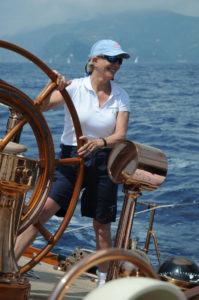
Elizabeth Meyer helming the restored Shamrock V in Portofino 2011. Photo courtesy Classic Boat.
The third major lucky break for Shamrock came when Elizabeth Meyer, who had restored original J Class yacht Endeavour, took on another extensive refit for Shamrock lasting 3 years. Thanks to Meyer, both Shamrock and the J Class have enjoyed an amazing renaissance. In 1988, the 3 surviving original J Class boats – Shamrock V, Endeavour, and Velsheda – raced against each other in the Antigua Classic Regatta. It was the first time in five decades that more than 2 J Class yachts had competed. Shamrock emerged the winner, and kicked off a revival of J Class racing that continues to this day.
Although only 10 J Class yachts were built during their heyday, plans were drawn up for 20 boats. New boats using these specifications have been built, continuing to grow the class more than 85 years after it began. In June 2017, Shamrock V competed at the America’s Cup J Class Regatta in Bermuda with 6 other J’s including newer builds Hanuman, Ranger and Svea. It was the largest J Class fleet in history – and surely a beautiful sight to behold.
All in all, the four-leaf clover proved lucky for Shamrock. Although she didn’t win the America’s Cup, she survived to bring the beauty of J Class sailing to new generations. Here’s hoping Shamrock V and the magnificent J Class survives another 80+ years.
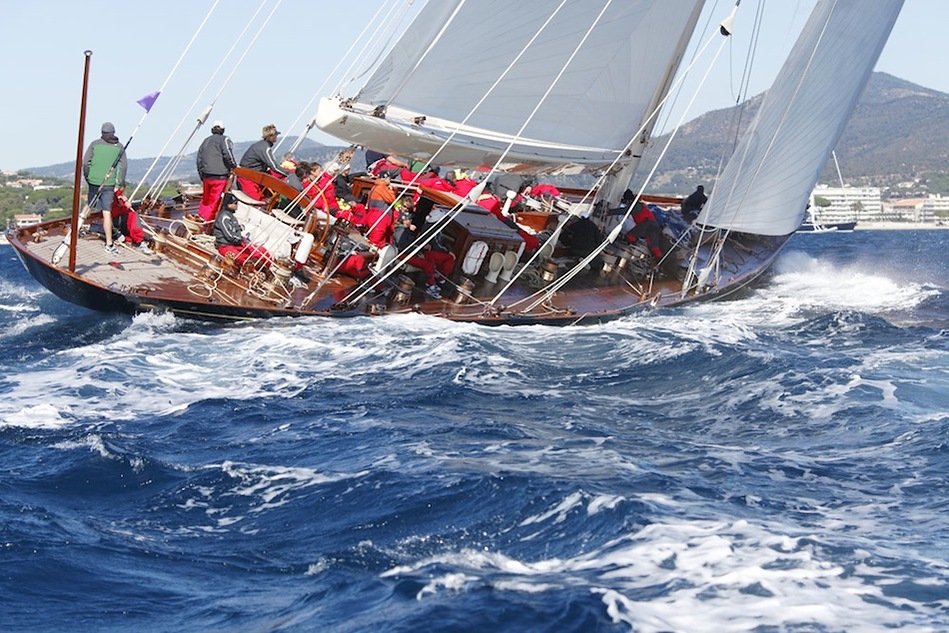
Racing Shamrock V with full crew. Photo courtesy J Class Association.
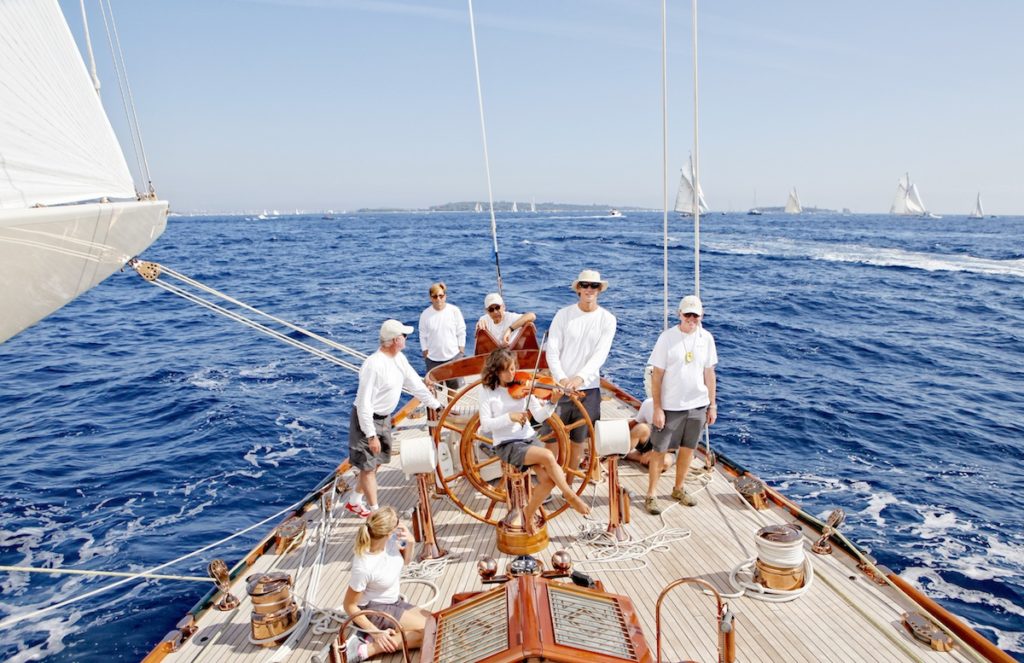
Onboard Shamrock V in Cannes. Why is the woman playing a violin? Good question! Photo by Christophe Launay.
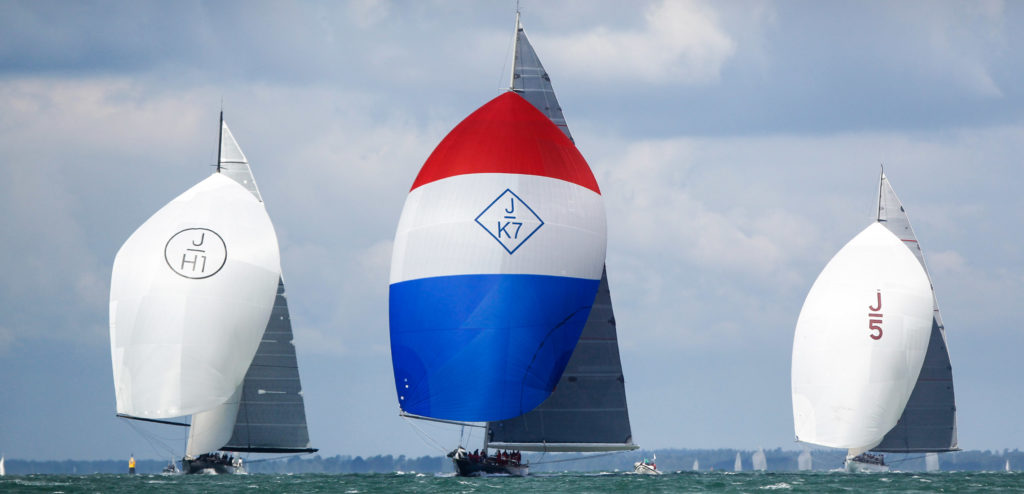
The modern J Class: Lionheart, Velsheda and Ranger racing in the Solent. Photo courtesy Dysktra Naval Architects.
Did you miss the America’s Cup in Bermuda? Read about our experience in Bermy for the big event, and some of the elements that contributed to New Zealand’s historic win.
